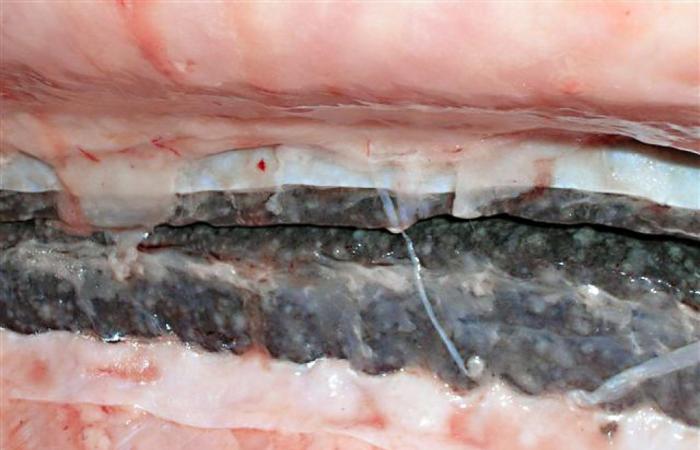During the past few months, the Veterinary Institute has detected bacterial kidney disease (BKD) at three food fish locations in central Norway. BKD is a serious contagious and reportable disease in both wild and farmed salmonids.
As of today, the disease has been detected in two neighboring locations in Trøndelag (Hitra and Orkland municipalities) and one location at the outlet of the Tingvollfjord in Kristiansund municipality. In addition, BKD is suspected at a fourth location in Aure municipality, located in outer parts of the Vinjefjorden. The four localities all have salmon in the sea and belong to the same farming company.
̶ The Veterinary Institute considers the situation to be serious for both farmed fish and wild fish in the area. For river owner groups, cultivation facilities and fishermen in the area, it is important to take the new disease situation into account by ensuring good biosecurity routines, says Torfinn Moldal, specialist for fish health at the Veterinary Institute, in a message.
Testing and tracking
Under the auspices of the Norwegian Food Safety Authority, sampling, laboratory investigations and tracing are now carried out to uncover the primary source of infection and the secondary spread of infection. There is a suspicion of infection spreading from the location in Hitra in Trøndelag to the locations on Nordmøre via the use of the same well boat for slaughtering fish and de-lice with fresh water in November/December 2022. This despite approved and certified disinfection. The bacterium is slow-growing by nature, and it can take a long time from fish being infected until they show clinical signs. This makes the situation unclear since infection may have already spread to new facilities through shared equipment, moving fish or via water currents.
The primary source of infection is currently unknown. In Norway, wild salmon is often considered the most important infection reservoir for the bacteria Renibacterium salmoninarum which causes bacterial kidney disease.
Since the bacteria can be passed from one generation to the next via fertilized roe, all wild-caught anadromous broodstock for cultivation are tested for bacterial kidney disease in connection with stroking. This includes about a thousand breeding fish a year. The last detections of wild-caught broodstock for cultivation were in 2014 in Lærdalselvi and 2012 in Vosso. There is thus little evidence that bacterial kidney disease is widespread in wild populations of salmonids in Norway today.
In the farming industry, BKD is detected only sporadically, with from zero to three cases a year. Some BKD outbreaks in farms in northern Norway have been linked to smolt imported from Iceland. In the last couple of years, undersupply of salmon roe in Norway has resulted in the import of roe. It is important to discover whether such imports have resulted in new introductions of R. salmoninarum.
Unusual infection situation
Refer to the Veterinary Institute’s fact page on BKD for more information about the disease.
– There has never been a similar infection situation for this disease in Norway. This applies to both the number of infected localities, the extensive changes in routines related to de-lice removal, and not least because of a significantly higher biomass of potentially infected farmed fish in the sea. The risk of spread also to wild salmon should therefore not be underestimated, says Åse Helen Garseth, specialist responsible for wild fish health at the veterinary institute.
Bacterial kidney disease is a chronic disease in the sense that fish that become infected can develop a lifelong carrier status. Establishment of endemic (persistent) infection in wild populations will have implications both for the health of the wild population, but also for farmed fish in affected areas.
In the summer of 2023, a new invasion of humpback salmon is expected. Pacific salmon (Oncorhynchus species) are generally considered more susceptible to bacterial kidney disease than Atlantic salmon. The humpback salmon has a reduced immune system due to sexual maturation and enters the fjords in large shoals – often called “flakes”. They can stay in the fjord for a period before they go up the river to spawn, but little is known about how they relate to breeding facilities during this period. It must be taken into account that humpback salmon can contribute to the spread of infection both between farms and to wild salmon in the rivers.
The Veterinary Institute encourages extra vigilance and notification of disease in wild fish.






